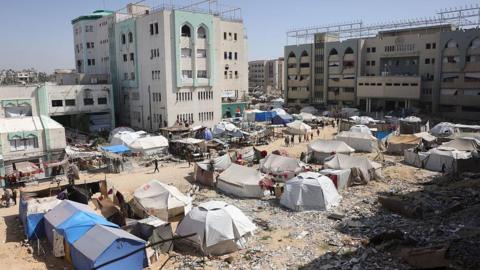The UN says 69% of the territory is now under active Israeli military evacuation orders, within a "no-go" zone running along the borders with Israel and Egypt and the Wadi Gaza valley south of Gaza City, or both. Some 500,000 people have been newly displaced or uprooted once more, with no safe place to go, it estimates.
The Israel Defense Forces (IDF) has said it has killed "hundreds of terrorists" in strikes while troops have advanced into several areas in the north and the south. It has established a new corridor that cuts the southern city of Rafah off from neighbouring Khan Younis and has designated 30% of Gaza as an "operational security perimeter".
On Wednesday, Israel Katz said Israel's policy was to "first and foremost make every effort to bring about the release of all hostages" still being held there and to "build a bridge to defeat Hamas later on".
"Unlike in the past, the IDF is not evacuating areas that have been cleared and seized," he said.
"The IDF will remain in the security zones as a buffer between the enemy and [Israeli] communities in any temporary or permanent situation in Gaza - as in Lebanon and Syria."
Hamas has insisted Israeli forces must withdraw from Gaza under any permanent ceasefire.
"Any truce lacking real guarantees for halting the war, achieving full withdrawal, lifting the blockade, and beginning reconstruction will be a political trap," the group said on Wednesday, according to Reuters news agency.
The Hostages and Missing Families Forum in Israel, which represents many hostages' relatives, called Katz's plan an "illusion".
"They promised that the hostages come before everything. In practice, however, Israel is choosing to seize territory before the hostages," it said.
"There is one obvious, practical, solution and it is to release all of the hostages in one stage with an agreement, even at the cost of ending the war."
Israeli military reservists and veterans have recently signed several open letters calling for the return of the hostages to be prioritised over fighting Hamas.


